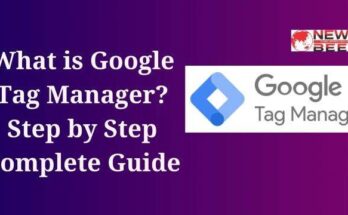Earning money on Pinterest is a creative and lucrative endeavor that allows individuals and businesses to turn their passion and content into profits. By leveraging Pinterest’s vast user base and visual appeal, you can monetize your interests through various methods such as affiliate marketing, sponsored pins, selling products, and driving traffic to your website or blog. With a well-planned strategy and engaging content, Pinterest can become a powerful platform for generating income and turning your hobbies into a source of financial success.
Earn Money on Pinterest
Earning money on Pinterest can be an attractive option for individuals and businesses looking to monetize their online presence. Pinterest is a visual discovery and bookmarking platform with millions of active users, making it a potential goldmine for those who understand how to leverage its features for profit. In this comprehensive guide, we will discuss various strategies and tips to help you earn money on Pinterest.
Understanding Pinterest
1. What is Pinterest?
Pinterest is a visual social media platform that allows users to discover, save, and share images and videos on virtual pinboards. It serves as a digital scrapbook for users to collect and organize content on various topics, from fashion and home decor to recipes and DIY projects.
Pinterest User Demographics Understanding your audience is crucial to monetizing your Pinterest presence effectively. Pinterest has a predominantly female user base, with statistics showing that a significant percentage of users are women aged 18-49. However, the platform is becoming more diverse, so it’s essential to tailor your content to your target demographic.
2. Setting Up a Pinterest Business Account
2.1 Creating a Business Account To start earning money on Pinterest, you need to set up a business account. If you already have a personal account, you can easily convert it into a business account or create a new one specifically for your business.
2.2 Claiming Your Website Claiming your website on Pinterest establishes your authority and helps you track the performance of your website pins. This involves adding a small piece of code to your website or verifying your website through a meta tag.
Also, Read This: What is Digital Marketing in Hindi
2.3 Verifying Your Website Verification is a crucial step in building trust with your audience and Pinterest. It also unlocks access to Pinterest Analytics and other advanced features.
2.4 Enabling Rich Pins Rich Pins provide more context about the content on your website, making them more appealing to users. Enable them by adding meta tags to your website or using a plugin if you’re on a platform like WordPress.
3. Building a Strong Pinterest Profile
3.1 Profile Optimization Your Pinterest profile should reflect your brand or niche. Use a clear profile picture, write a compelling bio, and include keywords relevant to your niche.
3.2 Creating Engaging Boards Organize your pins into boards that are appealing to your target audience. Use keyword-rich board titles and descriptions.
3.3 Pinning Strategies Develop a consistent pinning strategy. Pin regularly, and consider using scheduling tools to maintain a consistent presence.
4. Creating High-Quality Pins
4.1 Designing Eye-Catching Pins Design visually appealing pins that stand out on Pinterest. Use high-quality images and compelling graphics. Tools like Canva and Adobe Spark can help.
4.2 Pin Dimensions and Guidelines Pinterest has specific dimensions for pins. Make sure your pins meet these guidelines for optimal visibility.
4.3 Descriptive and Keyword-Rich Pin Descriptions Write detailed and keyword-rich pin descriptions to improve discoverability. Include relevant hashtags and keywords naturally.
5. Growing Your Pinterest Audience
5.1 Consistent Pinning Consistency is key. Pin regularly and at times when your target audience is most active.
5.2 Collaborations and Group Boards Join group boards and collaborate with others in your niche to expand your reach and gain more followers.
5.3 Engaging with Your Audience Respond to comments, engage with followers, and build a community around your brand or niche.
6. Monetization Strategies
6.1 Affiliate Marketing Promote affiliate products or services related to your niche. Earn a commission for each sale generated through your affiliate links.
6.2 Selling Products or Services If you have products or services to sell, use Pinterest to drive traffic to your website or online store.
6.3 Promoting Your Blog or Website Drive traffic to your blog or website by sharing valuable content that links back to your site.
6.4 Sponsored Pins Collaborate with brands for sponsored pins. Get paid for promoting their products or services to your audience.
7. Pinterest Advertising
7.1 Promoted Pins Learn how to create and run Promoted Pins to reach a wider audience and boost your visibility.
7.2 Pinterest Ads Manager Master Pinterest Ads Manager to track and optimize your advertising campaigns.
8. Measuring Success
8.1 Pinterest Analytics Use Pinterest Analytics to track the performance of your pins and boards. Pay attention to metrics like engagement, clicks, and conversions.
8.2 Key Performance Indicators (KPIs) Establish clear KPIs to measure the success of your Pinterest efforts, such as revenue generated, click-through rates, and follower growth.
9. Legal and Ethical Considerations
9.1 Copyright and Intellectual Property Understand copyright laws and respect intellectual property rights when using images and content on Pinterest.
9.2 FTC Disclosure Guidelines Comply with FTC guidelines by disclosing any paid partnerships or affiliate relationships in a clear and transparent manner.
10. Scaling Your Pinterest Income
10.1 Outsourcing and Delegating Consider outsourcing tasks like pin design or content creation to scale your efforts.
10.2 Diversifying Income Streams Explore additional income streams, such as creating digital products or offering consulting services.
10.3 Staying Updated Stay informed about Pinterest’s evolving features and algorithms to adapt your strategy accordingly.
Also, Read This: What is SEO? Type and Key Factors of SEO
11. Case Studies and Success Stories
11.1 Successful Pinterest Entrepreneurs Learn from real-world examples of individuals and businesses that have successfully monetized Pinterest.
Conclusion
Earning money on Pinterest is a viable option for those willing to invest time and effort into building a strong presence and understanding the platform’s nuances. By following the strategies outlined in this guide and staying committed to providing value to your audience, you can unlock the earning potential of Pinterest and turn your passion or business into a profitable venture. Remember that success on Pinterest, like any other platform, requires patience, persistence, and a willingness to adapt to changing trends and algorithms.




